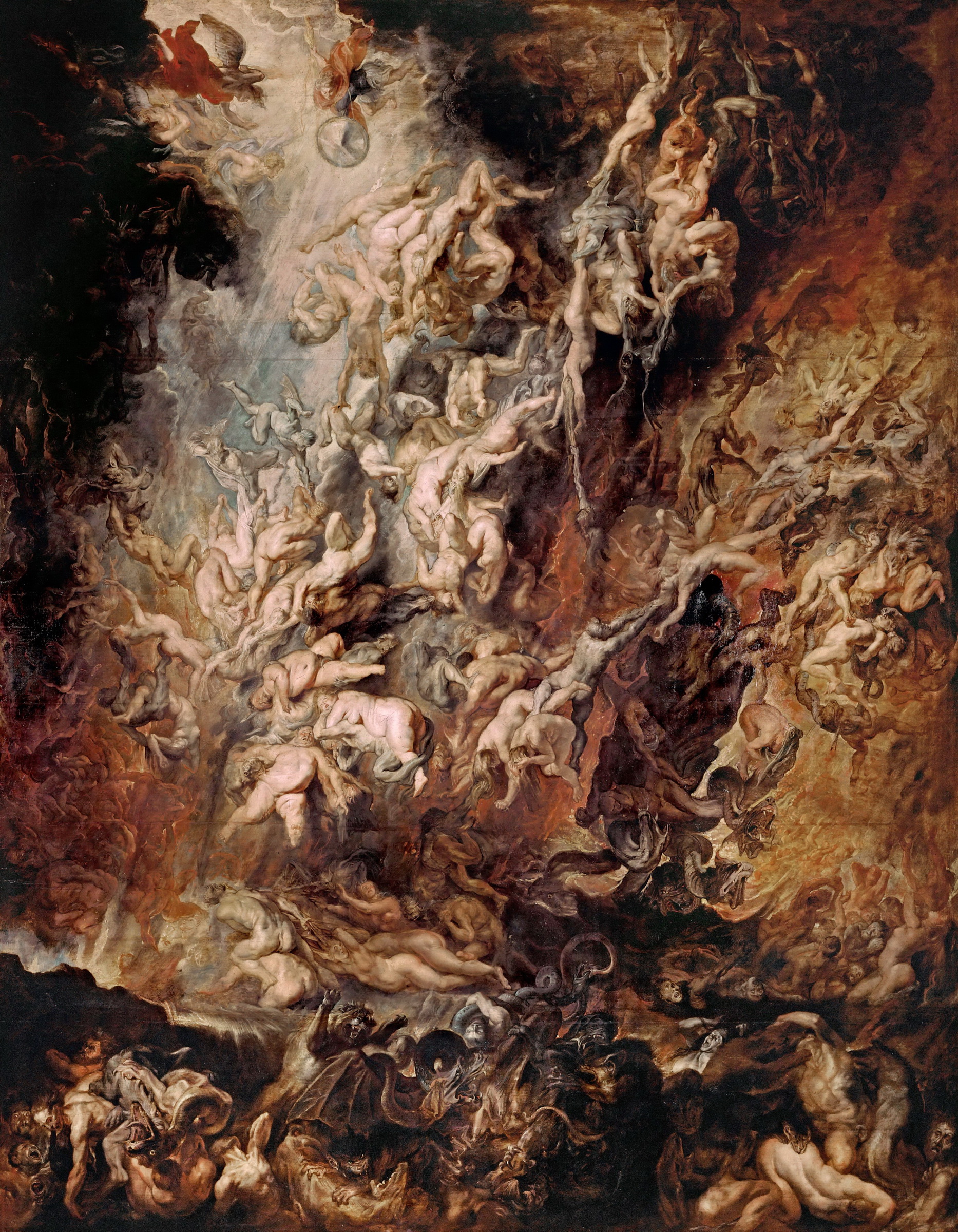Rubens was born 439 years ago today. On this occasion I present you one of my favorite paintings, the absolutely fantastic The Fall of the Damned. Known also as The Fall of the Rebel Angels, this is a monumental religious painting. It features a jumble of the bodies of the damned, hurled into the abyss by the archangel Michael and accompanying angels. David Freedberg assessed this painting as the "most brilliant assemblages of lusciously naked flesh in Western art."
The painting is a depiction of the casting out of the guilty and the fallen angels by Michael during God’s final judgment. At the moment judgment is pronounced, those found guilty and sent to Hell plunge towards their doom in a tornado of whirling bodies. At the lower edges, a monk is pulled down, gnawed by demons. Above him, a huge woman is carried on the back of another devil, his tail wrapped around her legs. At all angles, twisting and turning, these unfortunate souls stare up in terror at their terrible fates, or cover their heads in shame.
It is said that Rubens was the founder of the Baroque style of human movement, flesh, and sensuality. The guilty in the image are painted naked, as is Rubens' style, and the mass is being hurled into Hell by a twister grabbing up all those that have fallen. None that have been guilty of sin are spared, as seen in the side of the painting where humans are being picked off without having fallen into the tornado itself. You can see that the fallen angels are still acting in evil ways, as they torment the guilty humans even as they themselves are being thrown into the Pit. The contrast in light from the top to the bottom shows the fall from the light of Heaven to the dark despair of Hell.
In 1959, an art vandal threw acid on this painting, damaging it severely. According to him, he did not directly destroy the work, but the acid "relieves one from the work of destruction."




The Fall of the Damned
oil on canvas • 2.86 x 2.24 m
 Peter Paul Rubens
Peter Paul Rubens